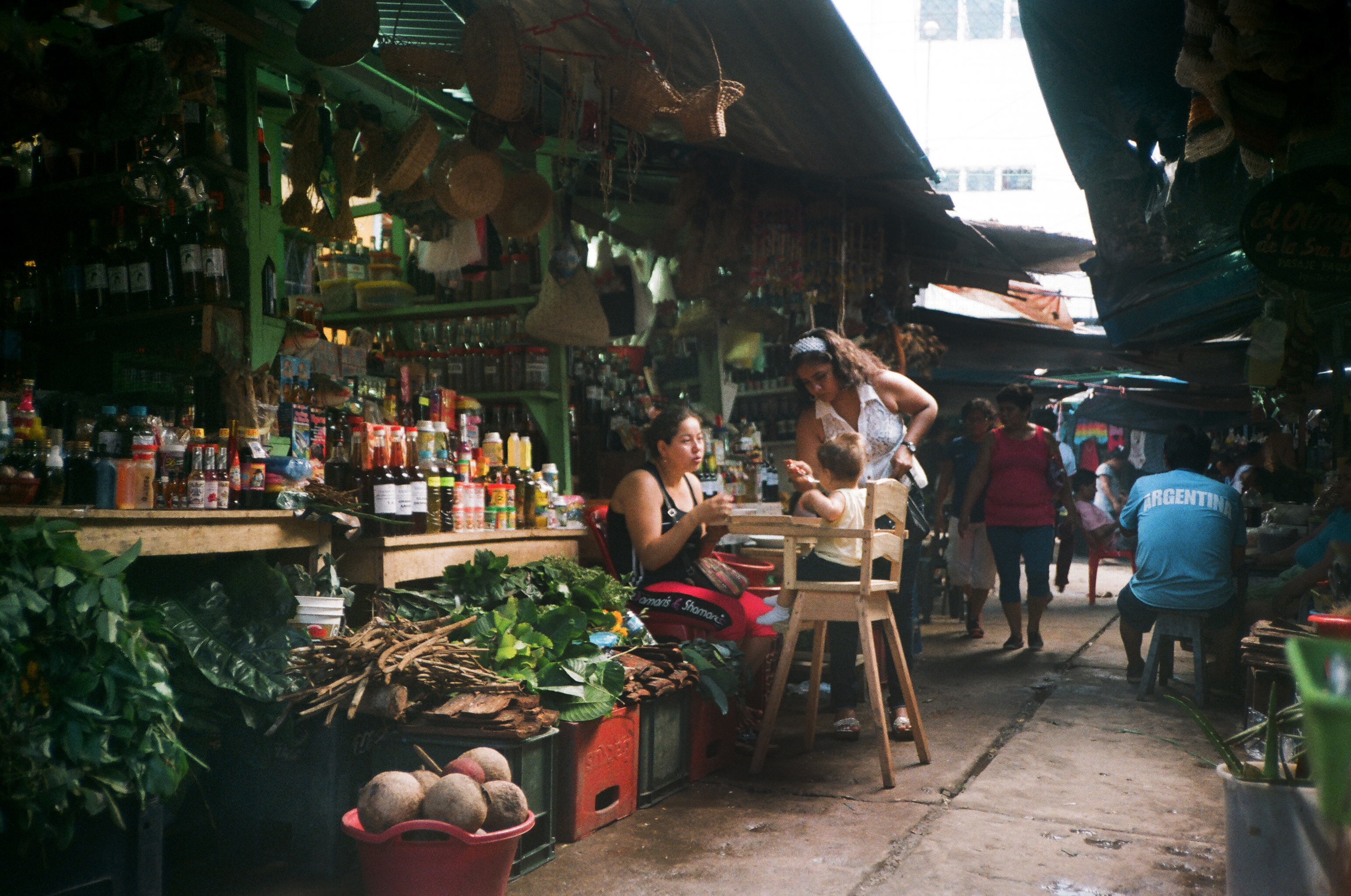Belén is one of thirteen districts in the Maynas Province of Amazonian Peru, home to some 60,000 people who live and work on the banks of the Itaya River. The region hosts a large outdoor market that functions as the primary source of food and supplies for residents; vendors selling clothing, toys, cosmetics, cookware, tools, and live animals extend through a seemingly endless number of bustling, interconnected alleyways. In the sector of the market called Pasaje Paquito, an abundance of medicinal plants and other materials used in therapeutic practice are for sale.
There are whole, unprocessed bunches of fresh herbs; dried leaves, stems and flowers; bottled and potted resins, oils and perfumes. They are lined and piled up on shelves and tables, in baskets and bowls, bundled and strung from the ceiling with twine. Massive aloe plants are laid out in rows alongside a variety of cactus cuttings for propagation. One vendor offers reused plastic water bottles filled with wild honey, placed in rows alongside gobs of spongey honey comb with bees still swirling in, out and around it.
While Pasaje Paquito offers what has been deemed “traditional medicine” by both locals and outsiders, medical sociologists have argued that “the naming process is a glimpse into the complexities of power and history” (Gale 2014); after all, what constitutes tradition? Many may envision Amazonian medicine as consisting of unprocessed, ancient remedies, collected and prepared by indigenous healers in the rainforest, but the reality is far more complex.
The urban market is sourced for medicines even when residents and practitioners themselves live in the jungle where plants proliferate. And while many remedies are unprocessed, a plethora of pre-packaged, commercialized products abound. The imports from Andean regions, like the “super food” Maca, or China, where packets of ground-up shark cartilage are produced, echo the industries, therapeutic customs and flora of regions beyond Amazonian Peru. Scholar Regina Bendix reminds us of “...the fallacy that cultural purity rather than hybridity are the norm” (1997).
A look through the aisles of Pasaje Paquito elucidates how global interests have shaped, and continue to shape, the local meanings of traditional remedies. Some plants are so globally popular that they are available for purchase in myriad forms at every vendor’s stall, such as the fibrous bark of Cat’s Claw [Uña de Gato], found in the 1990s to contain compounds that target cancer cells and implicated into a multi-million dollar market beyond Peru. A similar economic story can be told of Sangre de Grado [Dragon’s Blood], a syrupy red latex that flows from the inner bark of a tree. Vendors flaunt these plants as deeply ancestral, offering products that contain imagines of Amazonian healers on their packaging, and Bendix notes that “once a cultural good has been declared authentic, the demand for it rises, and it acquires a market value” (1997).
In nearby aisles of the market, one can purchase over-the-counter drugs for lower prices than offered in pharmacies. The presence of both biomedical and natural remedies in the region means that residents alternate therapeutic systems, or pursue both at once. Local healers chant prayers into bottles of Tylenol before administering the pills to their patients who suffer from illnesses they describe as modern, like Type 2 diabetes. Again, conceptions of “tradition” become highly complicated.
Local markets like Pasaje Paquito represent a dynamic, constantly evolving archive of medicinal resources and knowledge. We can learn much about the rhythms of a highly complex, local reality, and the larger forces that shift its ground.
References:
Bendix, Regina. 1997. In Search of Authenticity: The Formation of Folklore Studies. University of Wisconsin Press.
Gale, Nicola. “The Sociology of Traditional, Complementary and Alternative Medicine,” in Sociology Compass 8.6 (2014): 805-822.

Commentary on Rachel Tanur's Works: Phlox in Botanical Garden